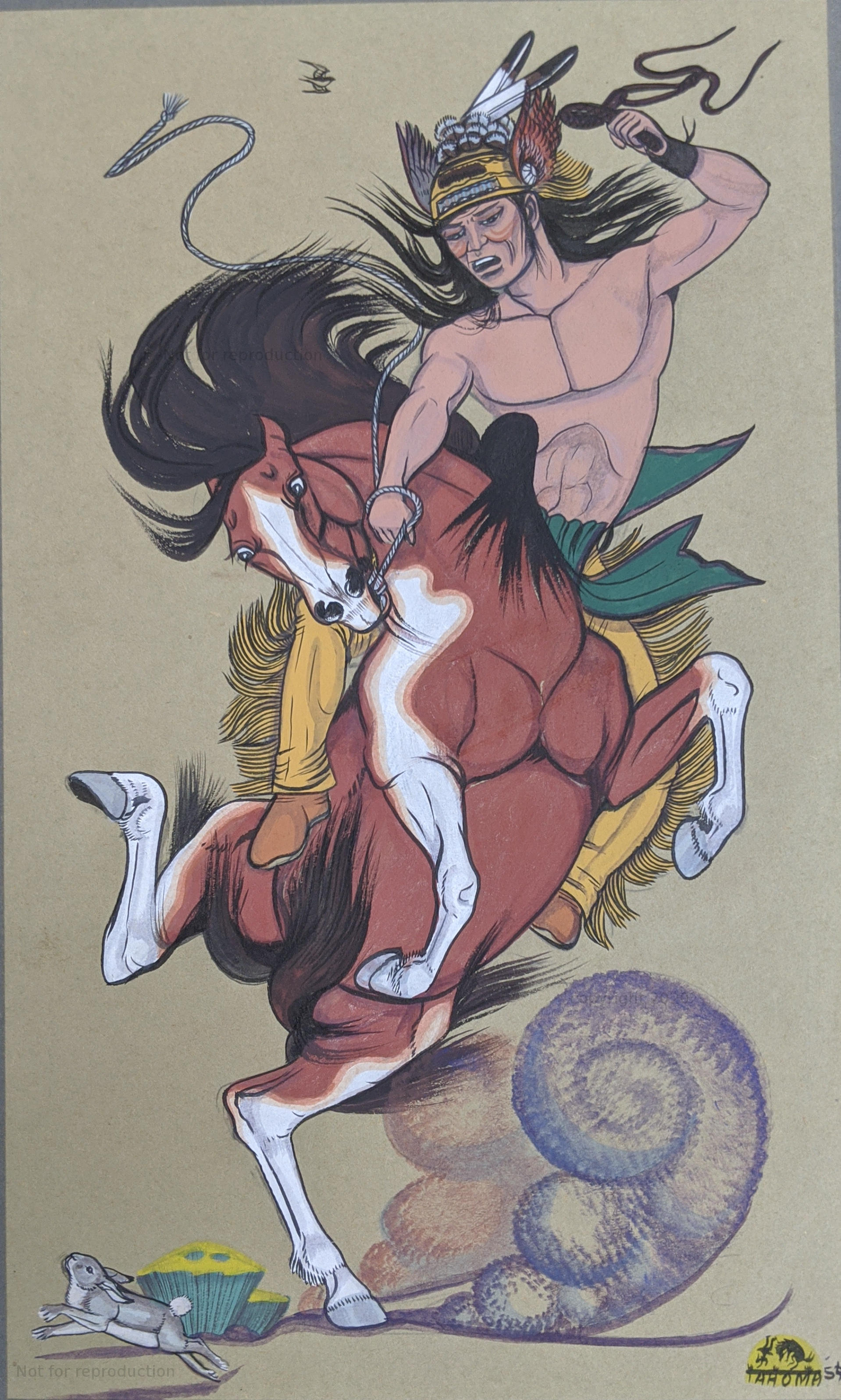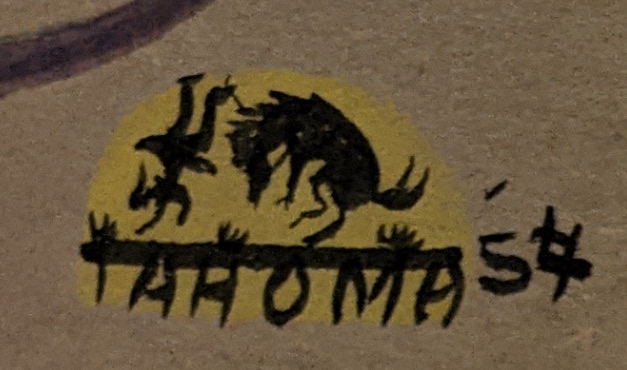The Last Jump by Quincy Tahoma

Quincy Tahoma painted The Last Jump in 1954. The subject matter and execution issues reflect the problems in Tahoma's life.
The scene should be familiar to any Tahoma fan. The painting shares a title with a famous Tahoma print. In fact this scene is one he painted frequently because it was easy to sell. A man is trying to break a horse, but the horse is startled by a small animal, a bunny in this case, and the man is thrown by the horse. We can see that he is thrown in the cartouche.

The painting has some of the hallmarks of Tahoma's best works. It depicts the most dramatic moment of the effort, where the story could end in success or failure. The horse is nearly flawlessly executed. The poses of the horse and the man are extremely three dimensional, with limbs jutting out at the viewer, and flailing in dramatic ways. The drama is what separates Tahoma's work from his Navajo contemporaries, who often favored flat or static scenes.
Yet when you spend a little more time looking at this painting, you can see that something isn't quite right. It looks like the paintbrush slipped when painting the horse's left nostril and there's a black splotch right next to it. The torso of the man is unfinished, with the outline missing from his right side, and his abs hastily outlined with a liner brush. The green of the man's loin cloth is flat green, as opposed to the bright, multifaceted green that he almost always used for the same piece of clothing in his other paintings.
What happened?
Quincy Tahoma died in 1956 due to complications of alcoholism. In 1954 he drank and painted every day. His work from this time is quite inconsistent. These inconsistencies mar this image. When I look at this image I see a painting that was started in the morning, when he was sober, then hastily finished in the evening when he was drunk. The pose, the horse and the headdress are almost flawlessly planned and executed. This headdress is one of the most spectacular I've ever seen in a Tahoma painting, and the horse reveals Tahoma's skill at capturing the animals.
I imagine Tahoma taking a break after painting most of the picture, continuing to drink, then returning to finish it. He hastily filled in the loin cloth with a basic green straight from the bottle. Then he dabbed some black into the horse's nostrils, but his arm slipped and he splotched it. Then he got angry and decided to do the signature. His arm slipped when making the top of the 5 and he dragged it across where the 4 would go. He took his time and finished the cartouche strong, but then he noticed that he forgot to finish the man's torso. Using the same narrow brush he used for the cartouche, he quickly outlined the man's muscles. Even then, he still forgot one small inner line.
Of course this narrative is pure fancy, but the story told by this painting is plain: the man failed to tame the horse just as Tahoma failed to tame his alcoholism.
